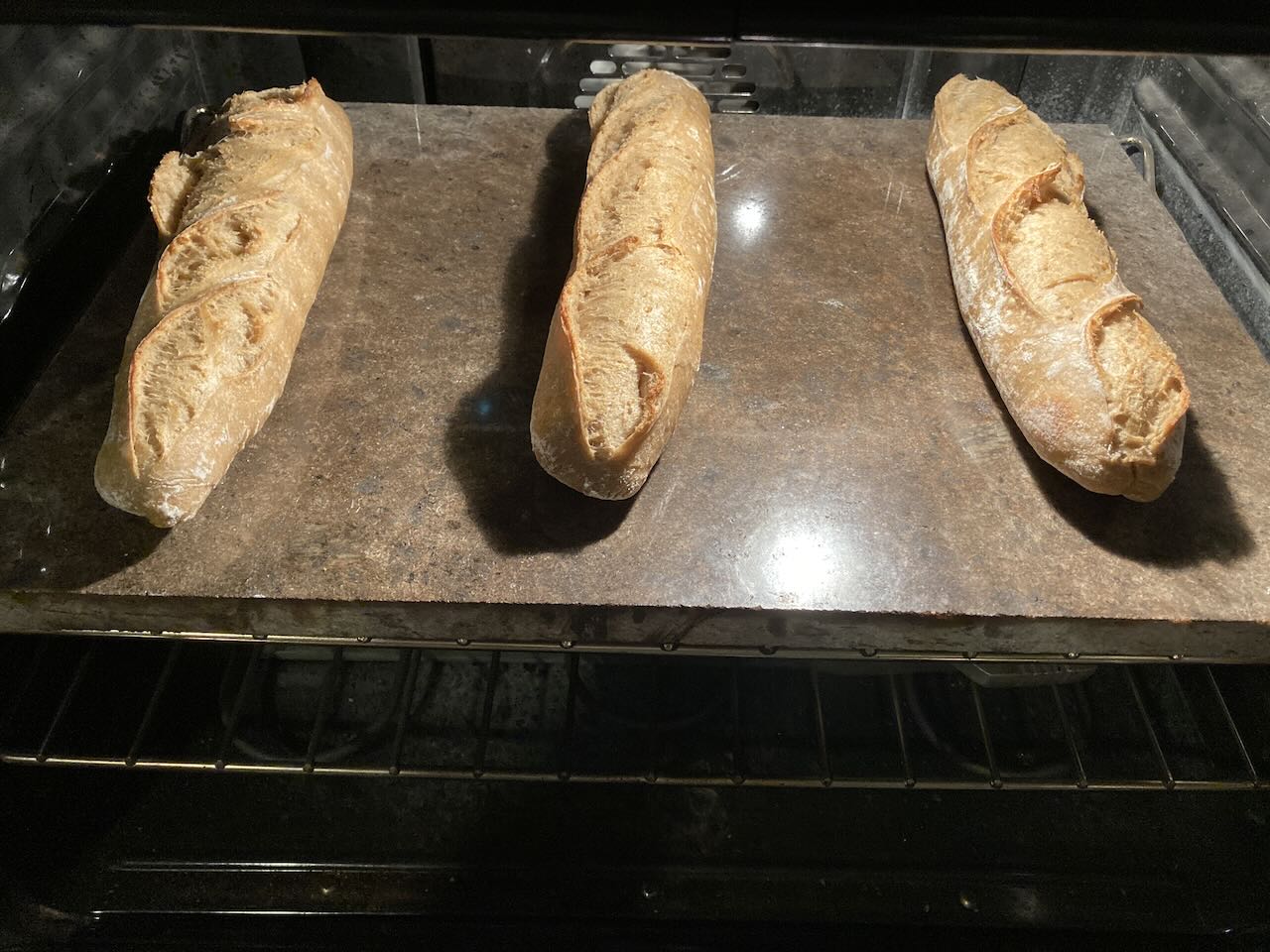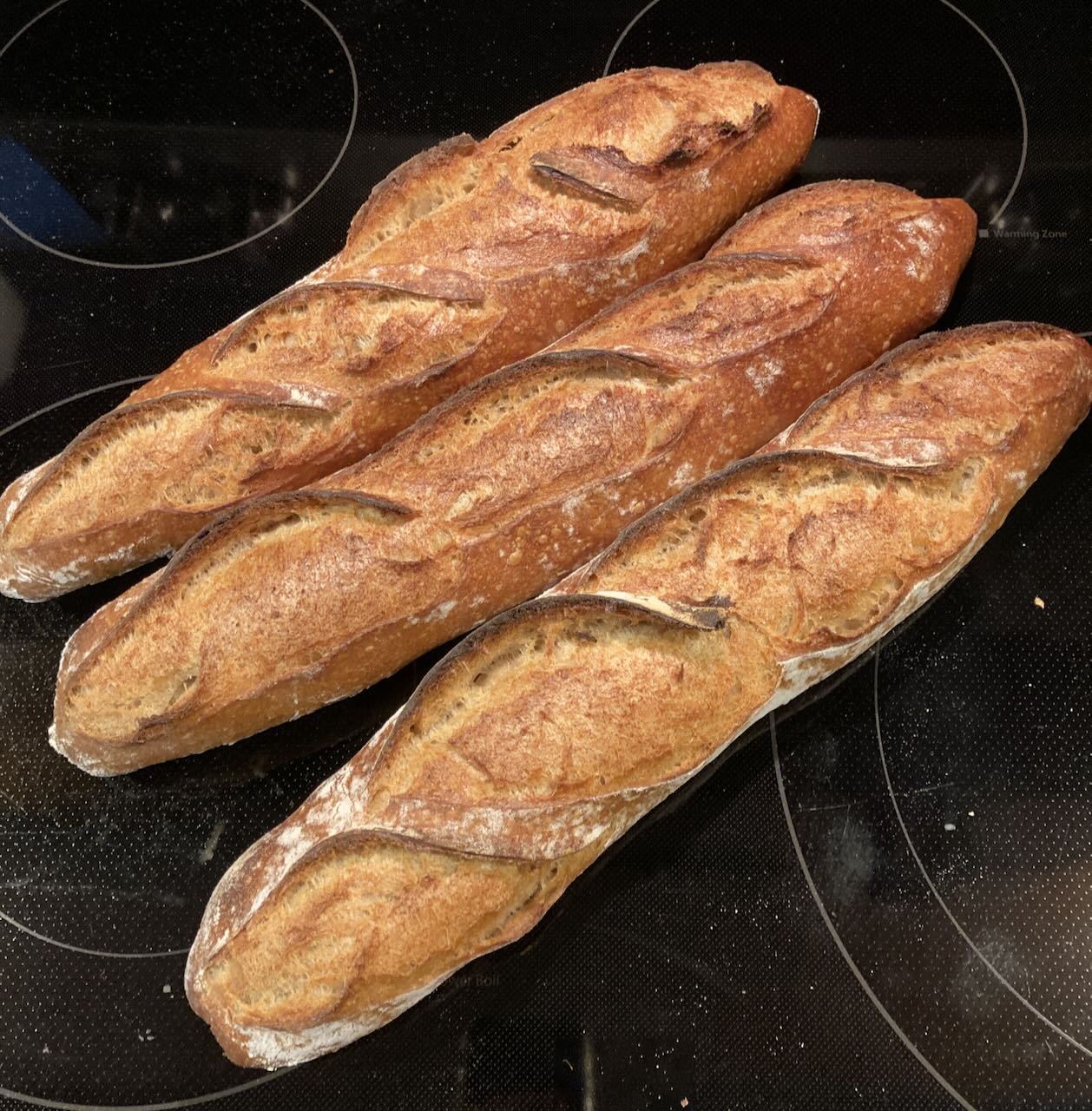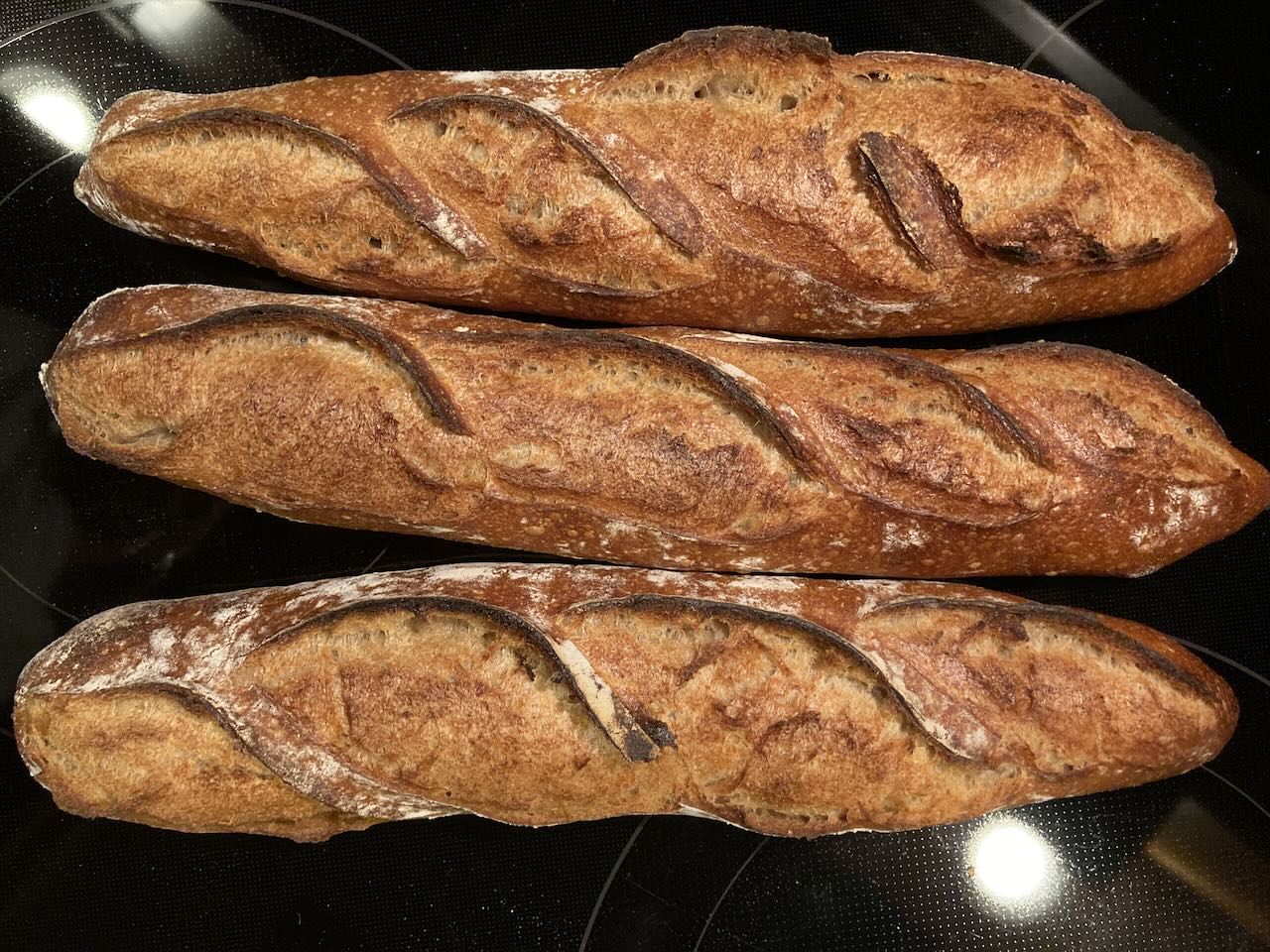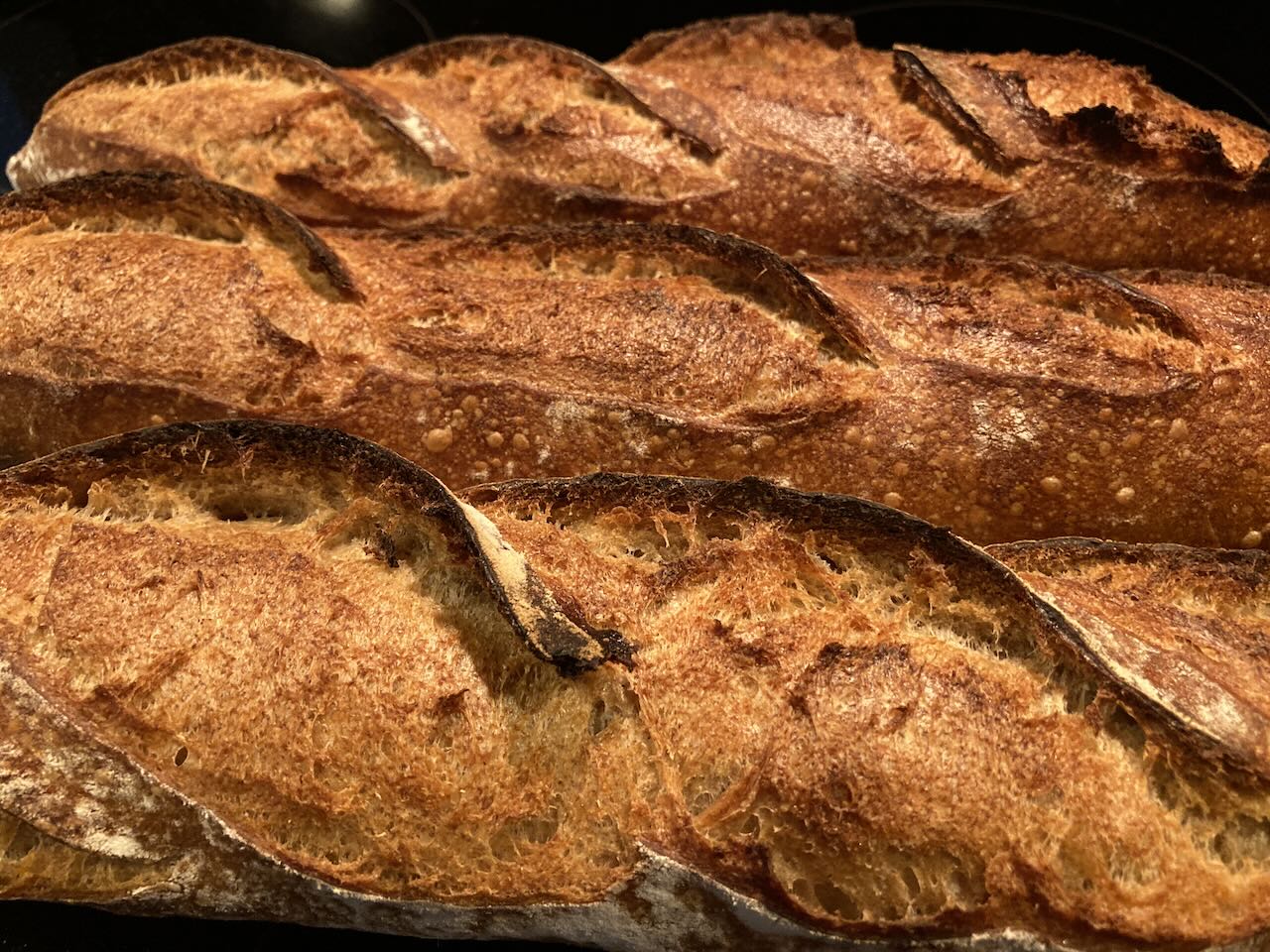Felila posted a link to an article in the Washington Post newspaper on baking with a newly developed flour, Kernza. During the summer I visited with a friend in Vermont who was gifted a small bag of Kernza flour, apparently promotional as the one pound bag has no markings on it other than the Land Institute logo and "Kernza Perennial Grain Flour". Not even the weight of the contents. And handed it over to me. The bag was placed on the back burner, but Felila's posting had me commit to baking with it.
Kernza is a very low gluten flour, and so requires a high protein flour to keep the final product from likely pancaking out. I still had some King Arthur Bread Flour at 12.7% protein. Enough to make the two levains and the first dough. After that I relied on Gold Medal Bread Flour at a slightly lower protein, 12% for the final dough mix of the second bake.
I used the published formula, mostly, and it is a very wet 80.5% overall hydration dough. The dough was quite "flabby", slack and unruly during the French Folds and subsequent Letter Folds due to it's hydration, and was initially sticky, the way rye flour can be, I wasn’t so pleased at handling it. But over the course of a few hours it more or less settled down before being placed in retard for the night. A morning divide and shape proved to be modestly less challenging, and I was pretty unsure as to how it would eventually bake up. It turns out fine, but the flaccid nature of this dough, at least for hand mixing and then baguette shaping, is not all that pleasurable.
So I did it again today, the next day. But this time I dropped the hydration down to 75%, which still made for a wet dough, but much more manageable. And again, had a fine bake.
Changes I made to the published formula were to bump the pre fermented flour to 20%, and then to mostly ignore the author's steps, following my own compass instead.
Apparently the grain is quite expensive, and it tasted like nothing more than a similar profile Whole Wheat bread, maybe a tad sweeter. So for right now I’d classify this as a boutique type of grain. Whether it gains traction and becomes more accessible and affordable, we shall see.
The formula normalized for 1000g of flour
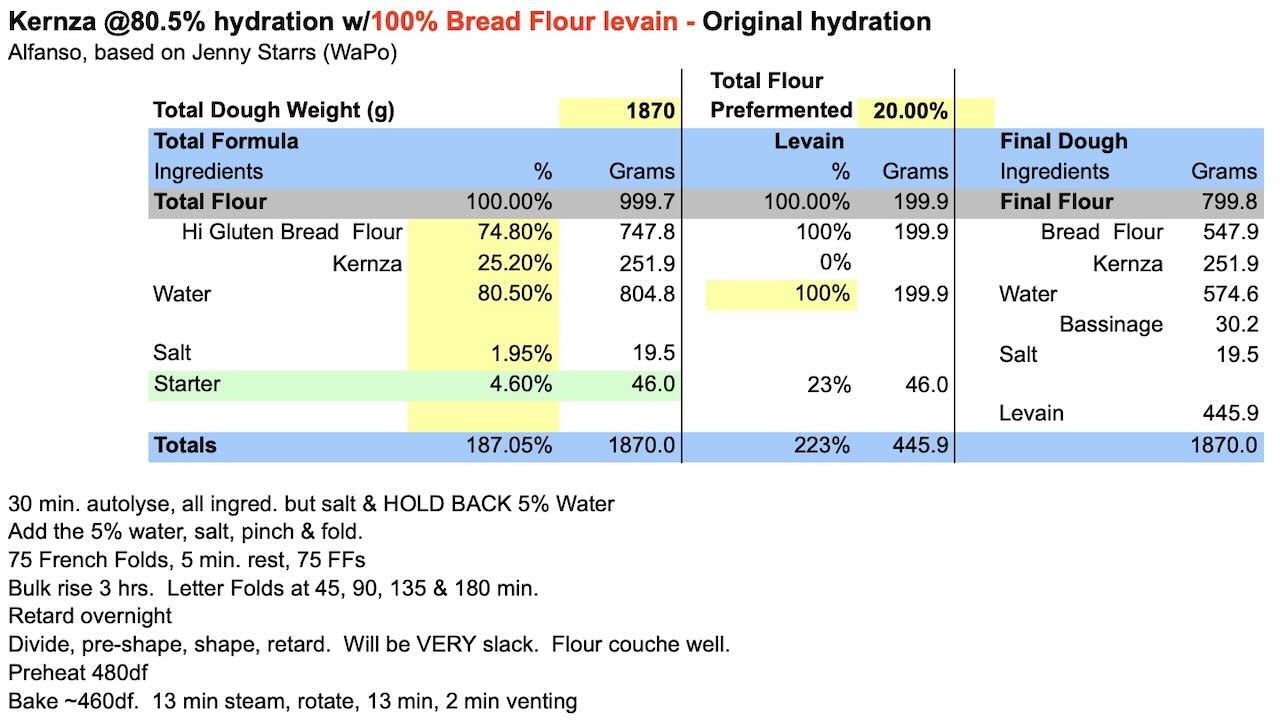
Both doughs were scaled out at 1200g. All things being equal, I don't see much difference in the final product, but I'd stay with the lower hydration version for ease of manipulation.
These are from the first, 80.5% hydration bake
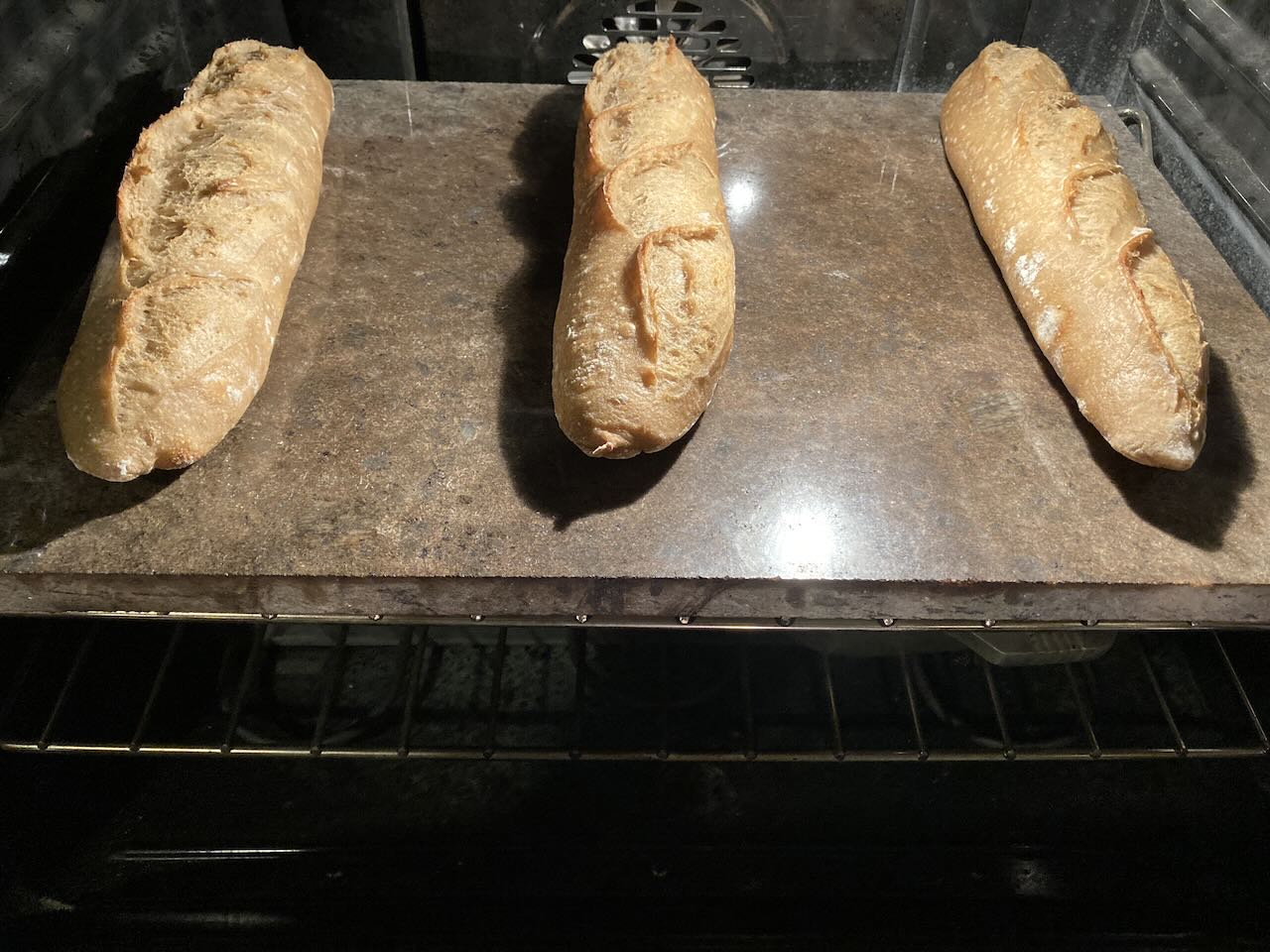
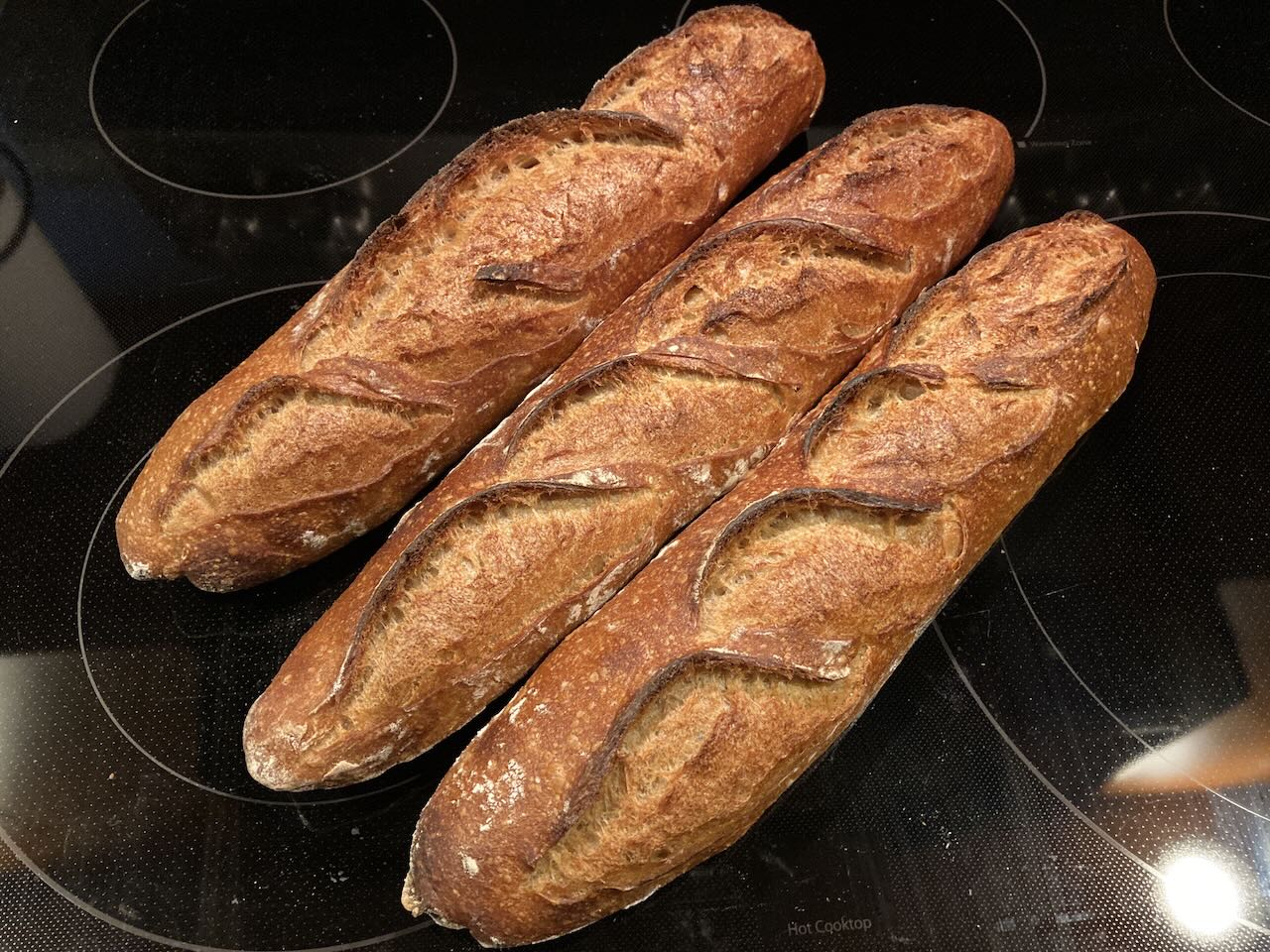
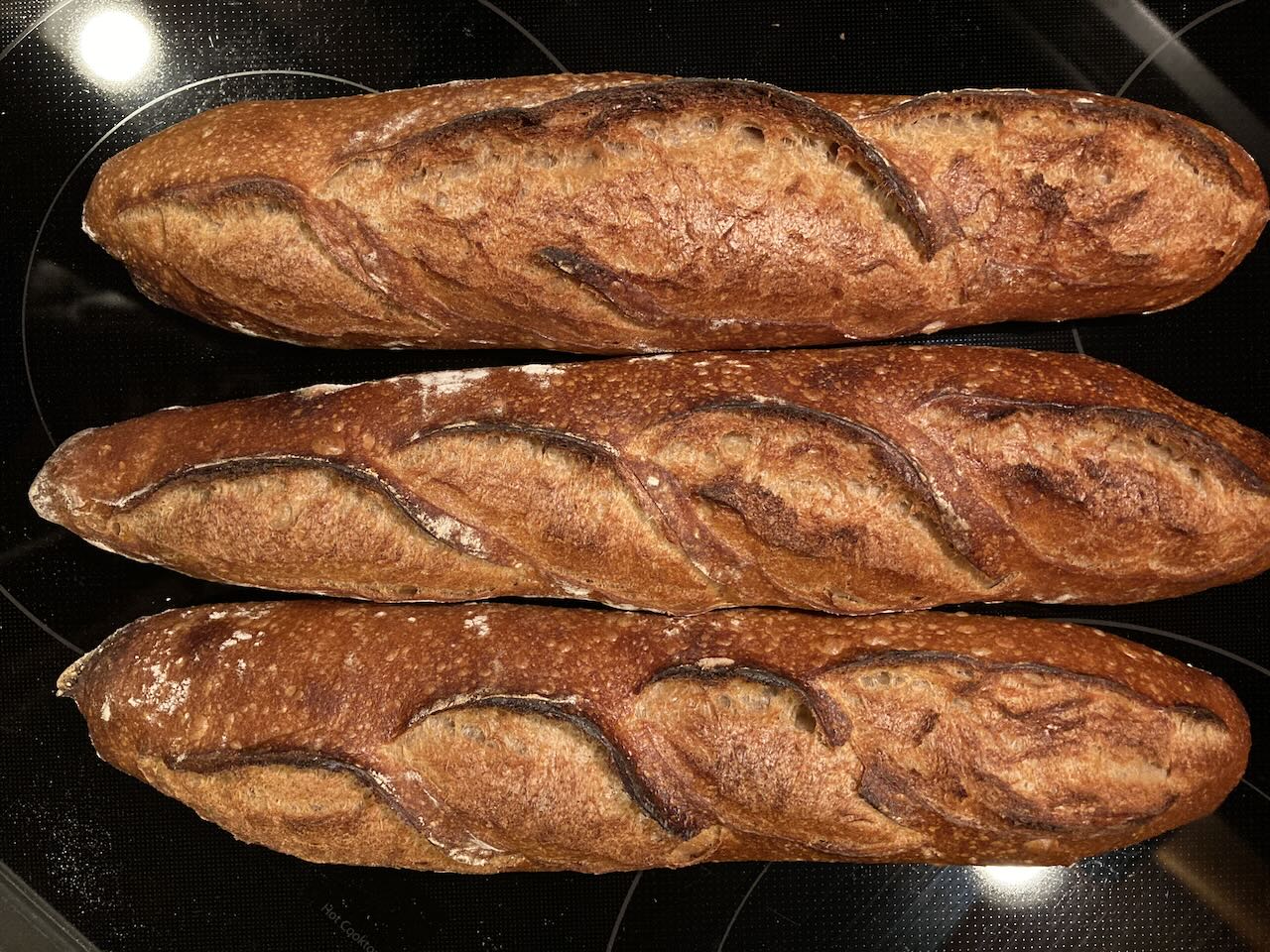
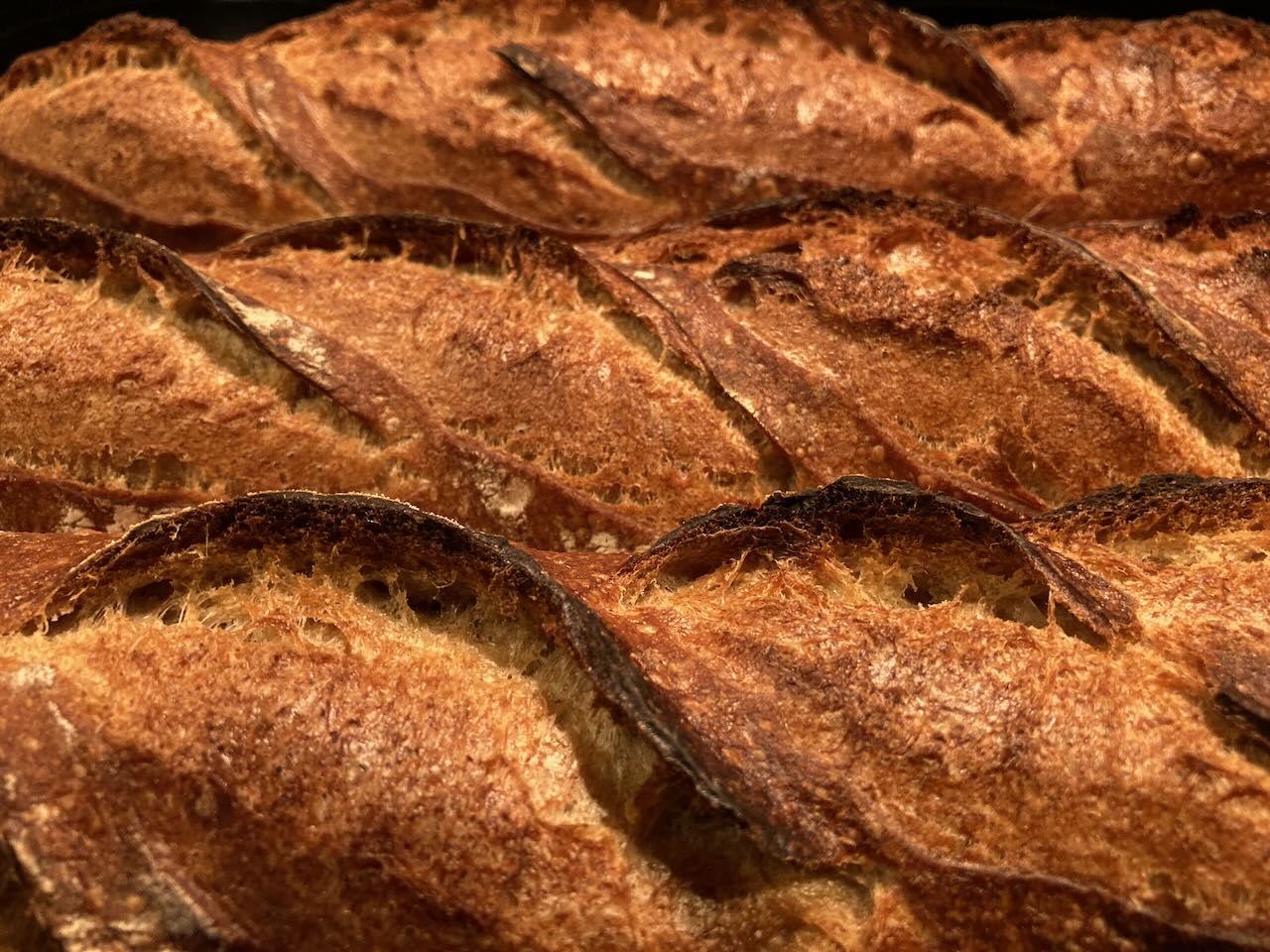
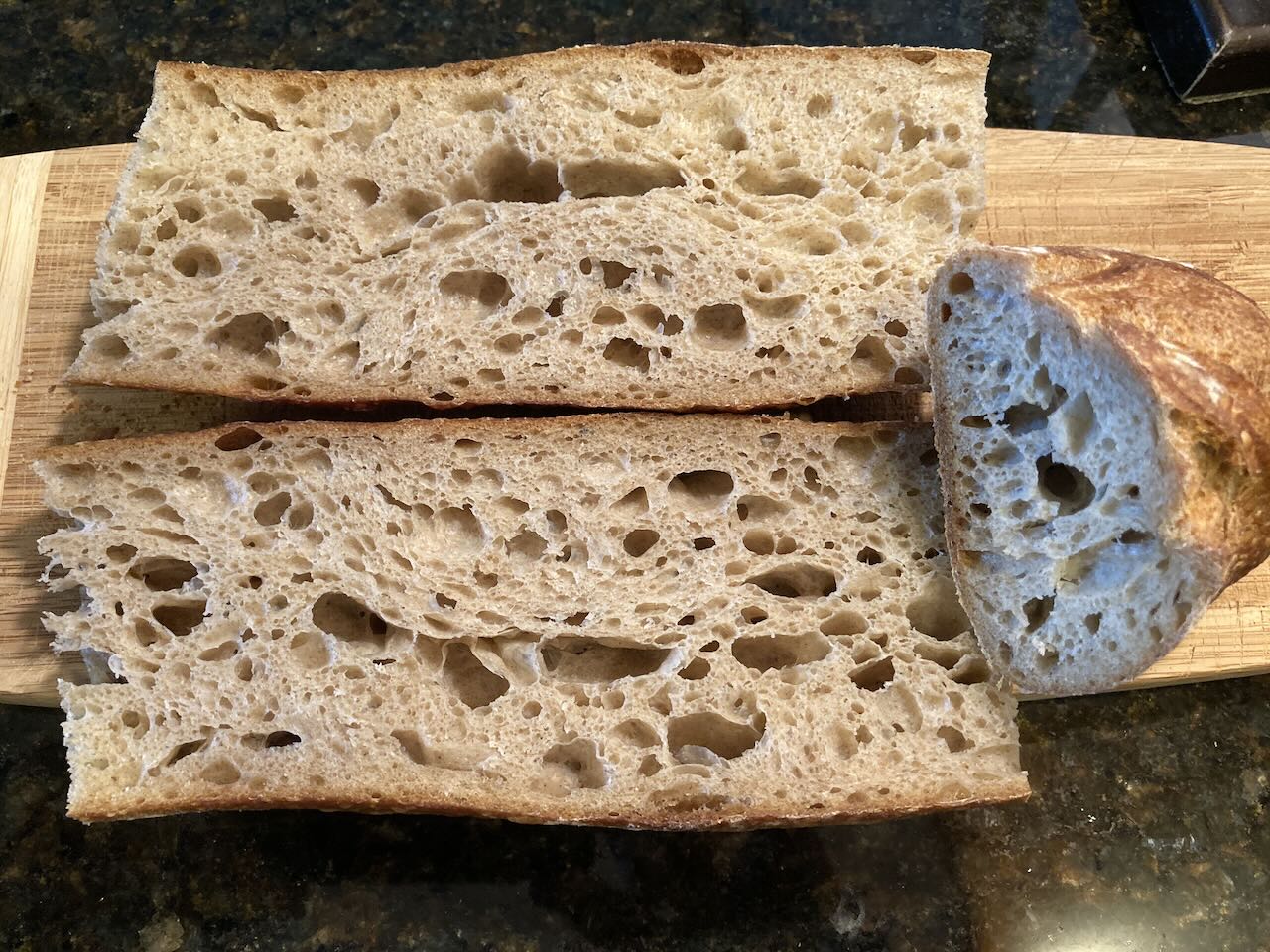
And from the 75% hydration bake
